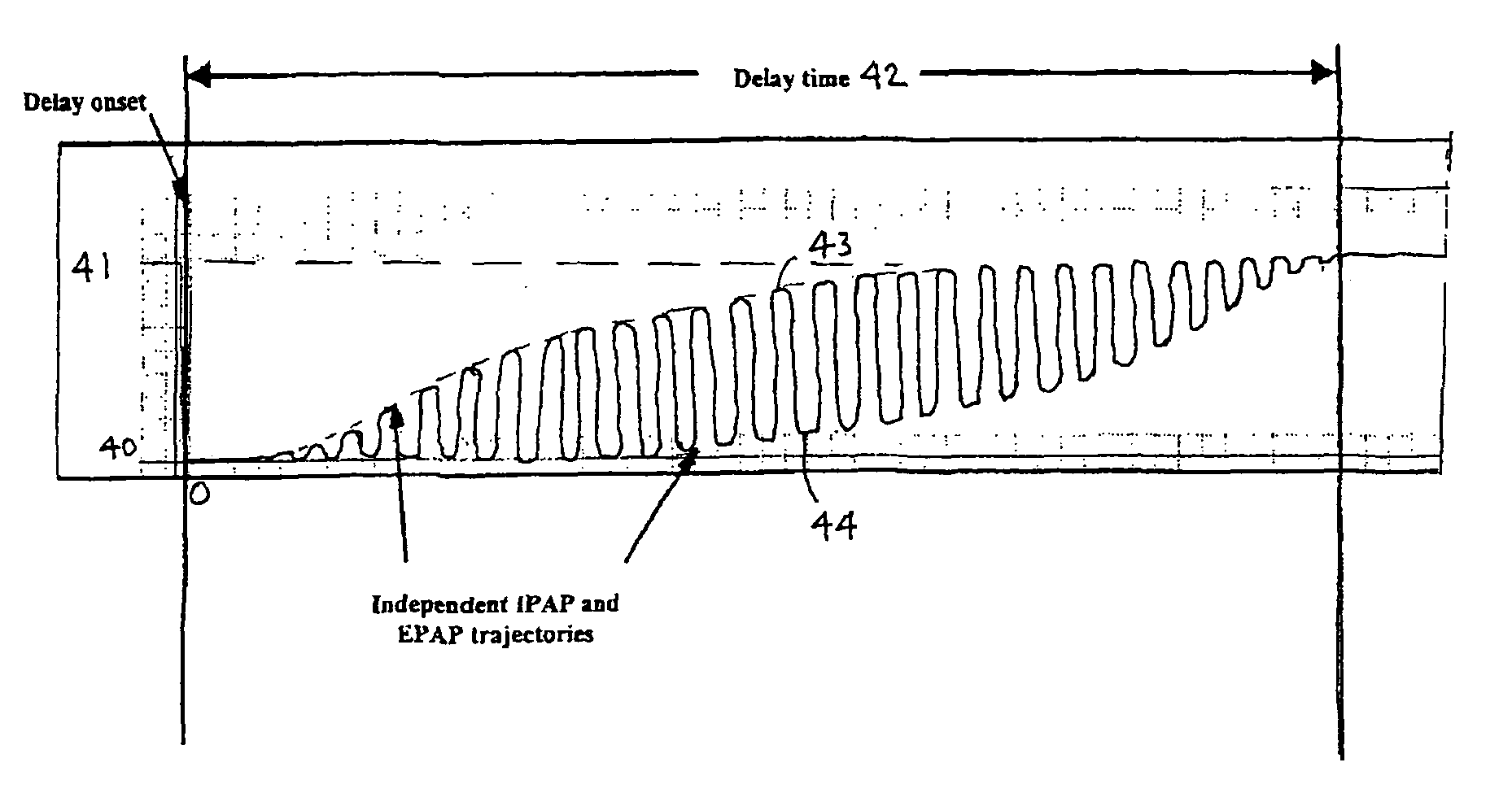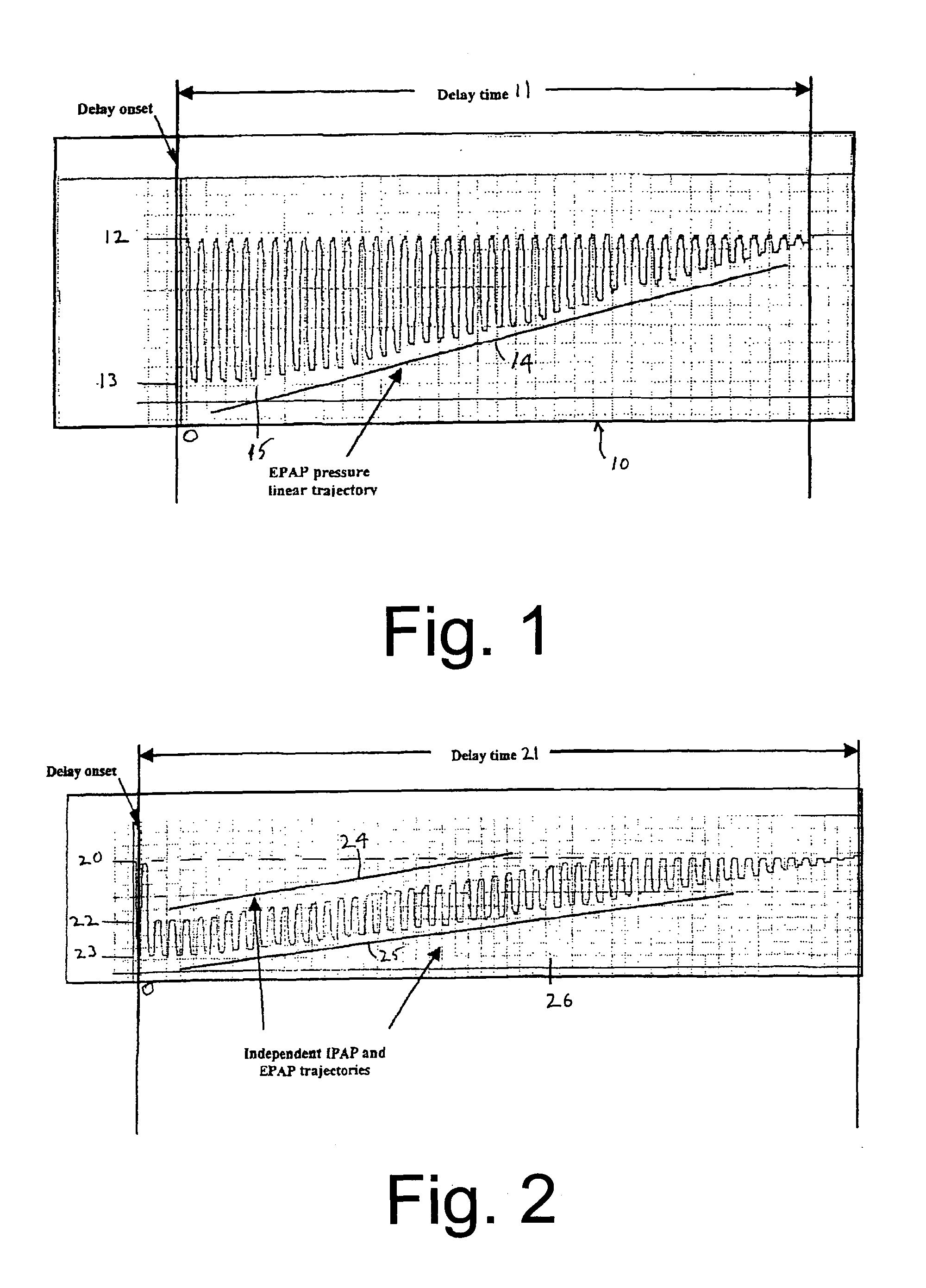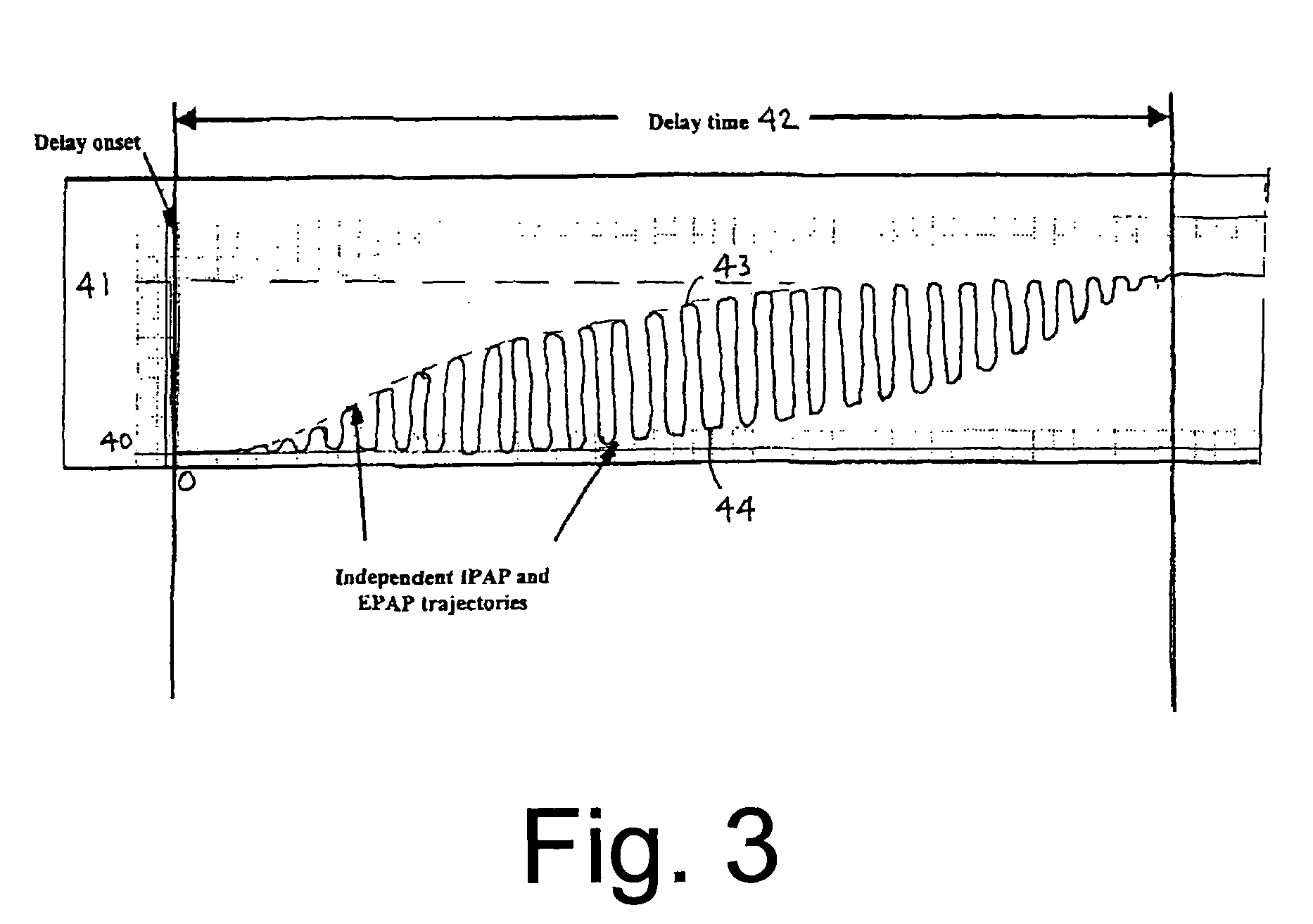Method for acclimating a CPAP therapy patient to prescribed pressure
a cpap therapy and patient technology, applied in the direction of valve details, valve arrangement, operating means/releasing devices, etc., can solve the problems of bilevel cpap therapy not being as effective, additional breathing work, and additional effort in exhaling against positive airway pressur
- Summary
- Abstract
- Description
- Claims
- Application Information
AI Technical Summary
Benefits of technology
Problems solved by technology
Method used
Image
Examples
Embodiment Construction
[0013]Program controlled CPAP apparatus is well known in the art. CPAP apparatus is commercially available for treating obstructive sleep apnea and other abnormal sleep events. The apparatus is programmed to apply a prescribed positive airway pressure to a patient's respiratory system while the patient sleeps. In one form of the program controlled CPAP apparatus, the pressure is reduced for a period of time while the patient falls asleep. This apparatus may be controlled to initially apply a pressure to the patient's airway which is below the prescribed therapeutic pressure and to ramp up the pressure to the prescribed level over a set period of time. Alternately, the apparatus may maintain the initial low pressure for a first period of time and then ramp up the pressure to the prescribed level over a second period of time.
[0014]CPAP apparatus has also been operated in a bilevel mode. In this mode, the apparatus detects when the patient begins to inhale and when the patient begins t...
PUM
 Login to View More
Login to View More Abstract
Description
Claims
Application Information
 Login to View More
Login to View More - R&D
- Intellectual Property
- Life Sciences
- Materials
- Tech Scout
- Unparalleled Data Quality
- Higher Quality Content
- 60% Fewer Hallucinations
Browse by: Latest US Patents, China's latest patents, Technical Efficacy Thesaurus, Application Domain, Technology Topic, Popular Technical Reports.
© 2025 PatSnap. All rights reserved.Legal|Privacy policy|Modern Slavery Act Transparency Statement|Sitemap|About US| Contact US: help@patsnap.com



